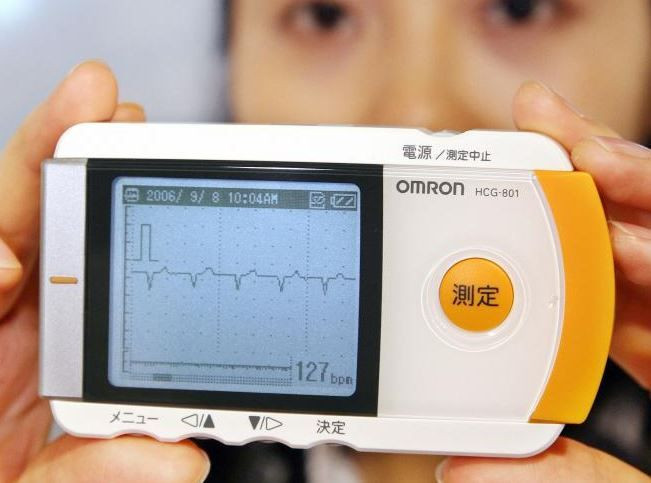Women Experience Heart Attacks Differently Than Men; Women Of Color Most Affected

Coronary heart disease (CHD) is no longer considered a man’s ailment — it is now the number one killer of American women (depending on where they live). Despite efforts to improve women's health care, a statement published in Circulation suggests CHD is still "understudied, underdiagnosed, and undertreated in women."
Statement authors said the problem, while not new, is surprising: Despite recent efforts and progress toward funding sex-specific studies, female subjects remain underrepresented in new research endeavors. The authors speak specifically to the differences between men and women when it comes to acute myocardial infarction, or heart attack. And according to the press release, it's the first statement from the American Heart Association to do so.
Risk factors
Certain risk factors are "more potent" for women, such as cigarette smoking, hypertension, dyslipidemia, obesity, type 2 diabetes, and other psychosocial factors such as depression. Increased body weight in particular is associated with increased coronary risk, and "women in the heaviest category show a 4-fold higher risk for cardiovascular events compared with lean women."
In one trial, the authors noted that young women were more likely to have a history of depression than men, which is an important risk factor for heart attack and cardiac death. Separate research shows that anxiety also can be a moderate risk factor for incidence of ischemic heart disease and cardiac death in both men and women.
Signs of heart attack are also similar to men, but women tend to show more atypical symptoms, such as shortness of breath, nausea, vomiting, back, or jaw pain.
Causes
Plaque rupture is "by far the most common cause" of heart attack, followed by plaque erosion and calcific nodule. Rupture is the underlying cause of heart attack in 76 percent of men and 55 percent of women; however, recent autopsy studies have shown an increased prevalence of plaque erosion in women compared with men, particularly younger women.
Study authors reported women experience fewer "severe blockages" that require stents, tiny tubes made from mesh that are inserted to permanently prop open an artery, the American Heart Association reported. Even so, women's coronary artery blood vessels, (which tend to be smaller in women), still get damaged, resulting in decreased blood flow to the heart, the authors said. If doctors don't correctly diagnose the underlying cause, they can't properly prescribe treatment.
In fact, between 1997 and 2006, the authors found that hospitalizations for heart attack among young people increased 2 percent. And recent data of heart attack patients aged 65 and younger revealed a "nearly 2-fold higher crude 30-day hospital readmission rate in women compared with men on a similar age." There was also an increase in CHD incidence and deaths among women aged 45 to 54.
Treatment
Women have more favorable outcomes with therapy, and yet study authors found women were less frequently referred for appropriate treatment during heart attack than men — despite proven benefits of therapy. Two effective therapy types include thrombolytic therapy and primary percutaneous coronary interventions (PCI).
While women treated with thrombolytic therapy "have higher morbidity and mortality rates," they also face a higher risk of bleeding complications and death. PCI, on the other hand, is associated with a lower 30-day mortality rate and reduced risk of intracranial bleeding, but there is still a high risk of vascular complications.
These are just two of the many therapies available to women. Study authors said it's disappointing that women are less likely to participate in or complete treatments than they are to know about them in the first place.
Racial/ethnic disparities
It's one thing to note the many ways in which women are worse off than men when it comes to heart attack, but it's also worth noting that these risks and outcomes vary among women, too. The authors believe recognizing these disparities are the key to heart attack prevention and treatment methods for women overall.
The current statement noted that black women compared to white women have a higher incidence of heart attacks in all age categories, with young black women in particular experiencing higher in-hospital death rates. Black and Hispanic women also tend to have more heart-related risk factors, such as diabetes and obesity at the time of their attack than non-Hispanic white women do.
More than one third of American Indian women have three or more cardiac risk factors, and "a staggering 78 percent" of these events occurred in diabetics. "At a time when other groups are experiencing a decline, the rate of coronary events in American Indian women is increasing to levels that are almost 2-fold higher than in the US population," the authors said.
According to the American College of Cardiology-National Cardiovascular Data Registry, women from all ethnic backgrounds were less likely to undergo PCI and coronary artery bypass grafting than their male counterparts. And multiple studies have "documented disparities in rates of referral of black women to coronary angiography and reperfusion compared with white women and black men."
The data suggests greater need "for continuated public health messages and interventions," the authors added. More personalized approaches, especially for women who have a greater burden of risk factors, will help to "improve the awareness, prevention, recognition, treatment, and outcomes of CHD in women."
CHD reportedly afflicts 6.6 million U.S. women annually, and it remains the leading morbidity and mortality threat in women. The authors urge women not be afraid to ask their healh care providers questions.
Source: Mehta L et al. Acute Myocardial Infarction in Women: A Scientific Statement From the American Heart Association. Circulation. 2016.
Published by Medicaldaily.com



























